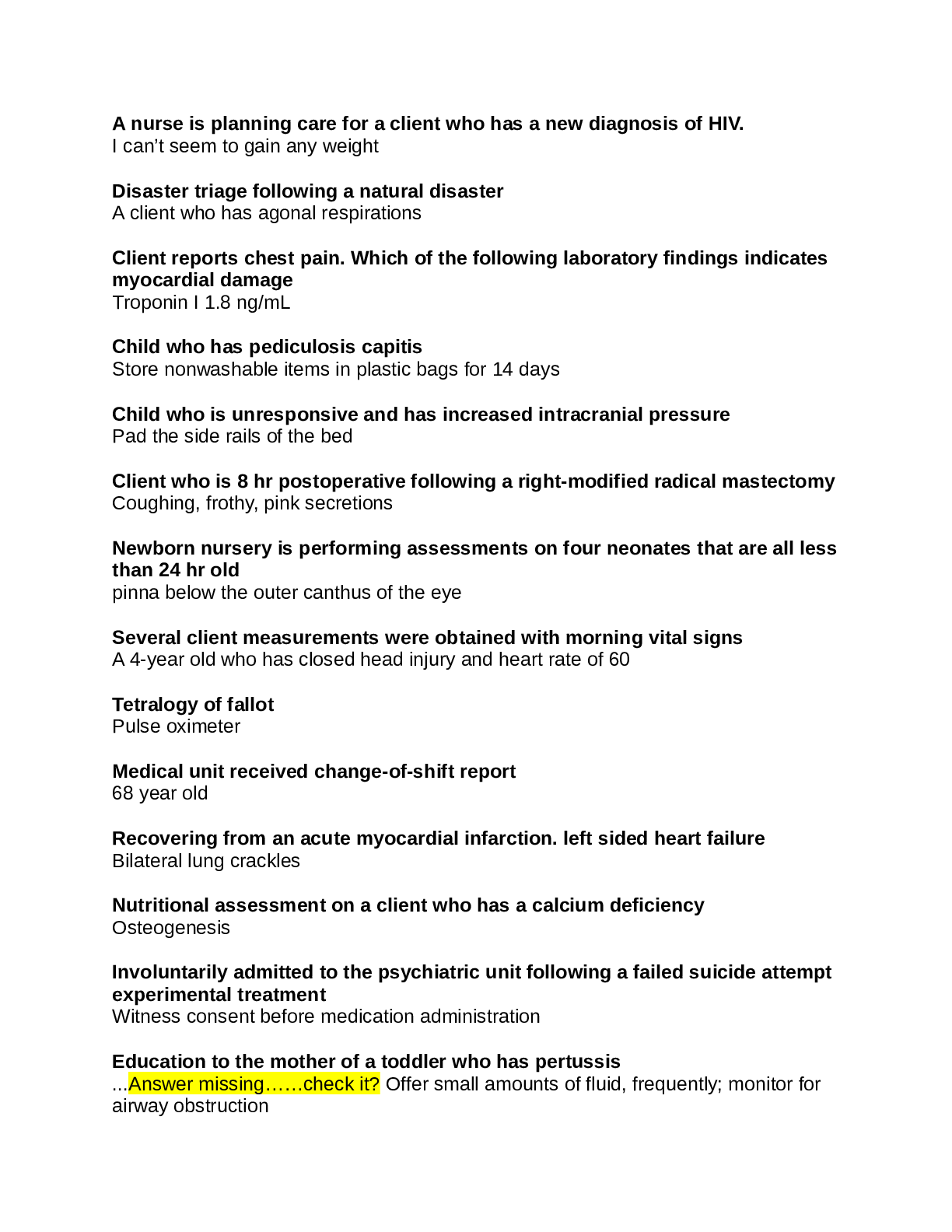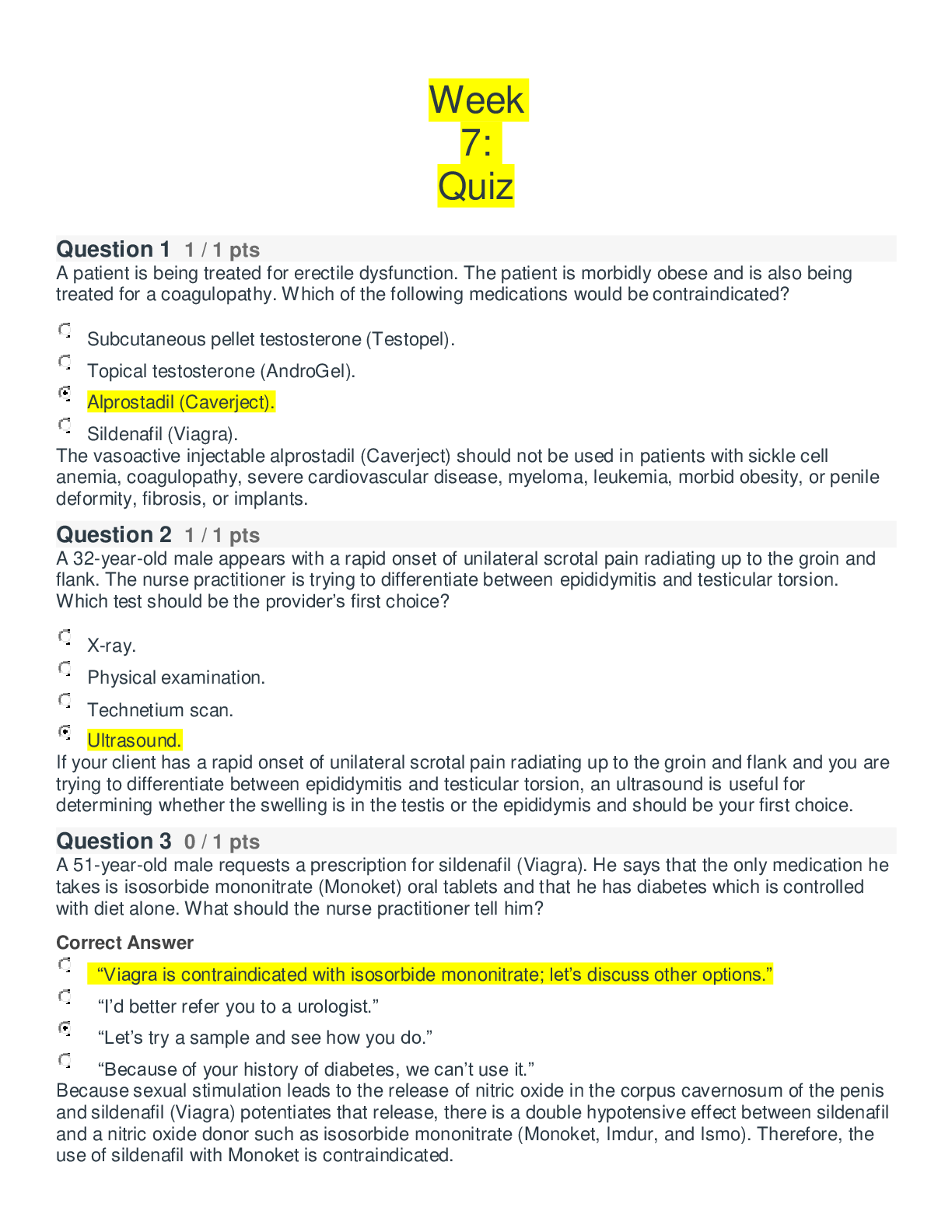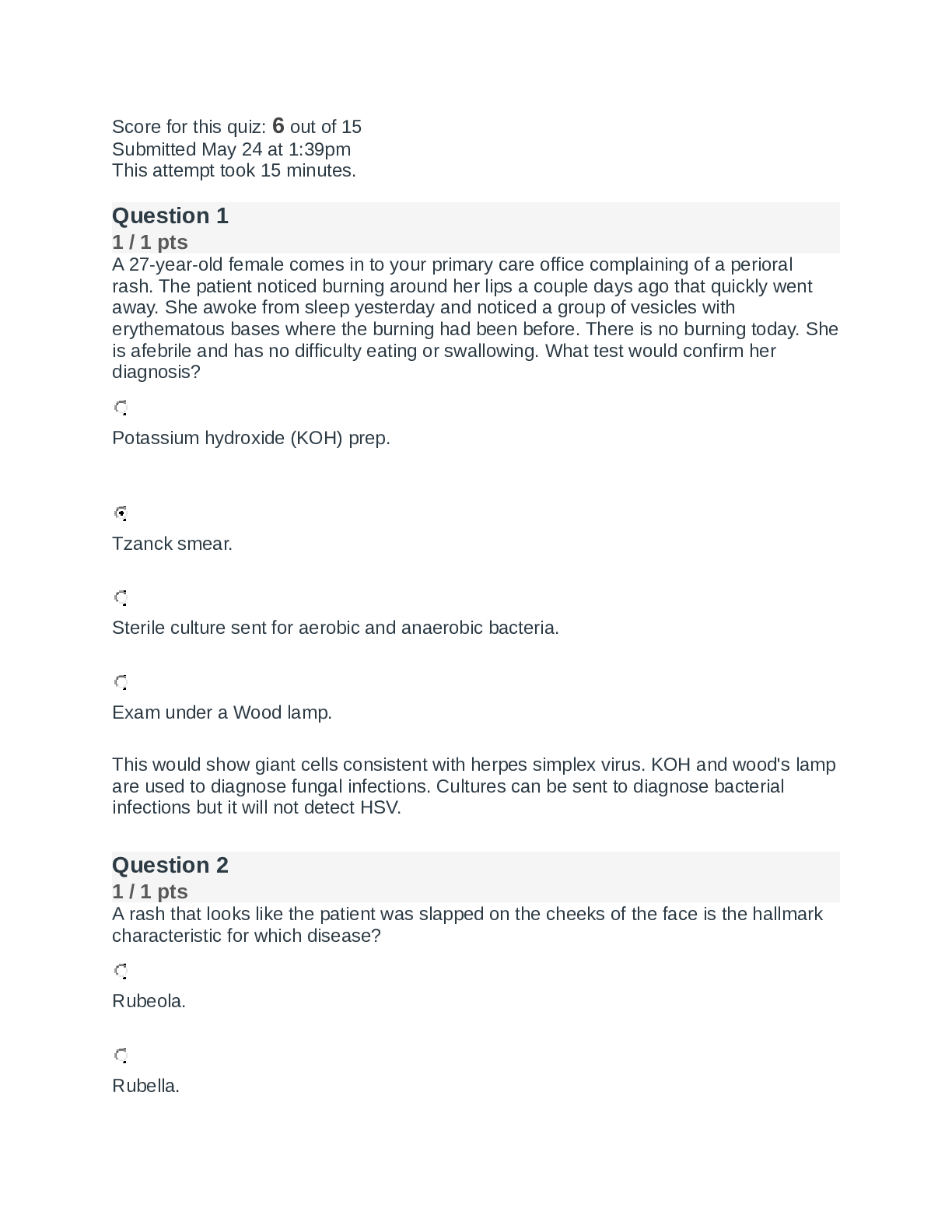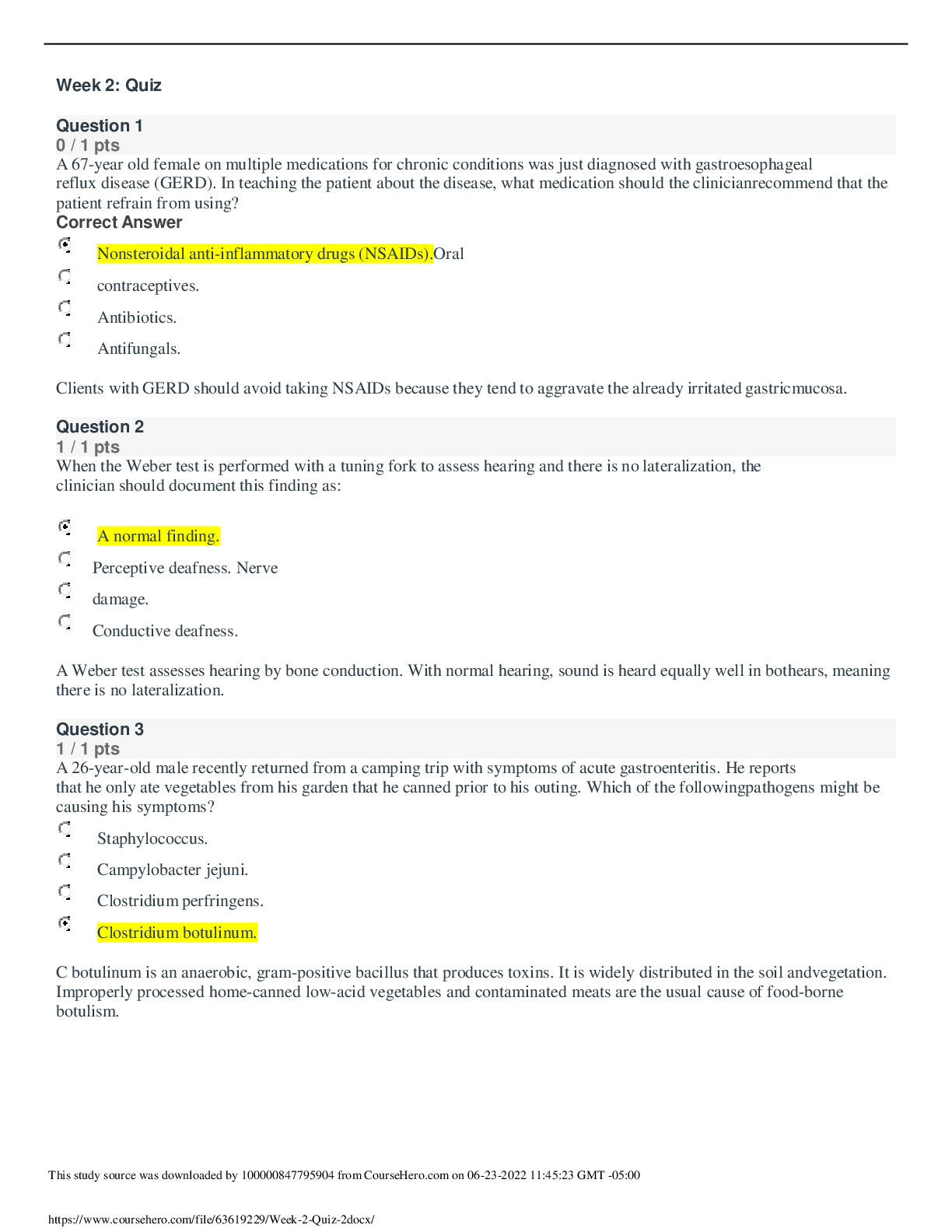Pathophysiology > QUESTIONS & ANSWERS > Chamberlain College of Nursing NR 507 Week 7: Advanced pathophysiology Quiz Already Passed (All)
Chamberlain College of Nursing NR 507 Week 7: Advanced pathophysiology Quiz Already Passed
Document Content and Description Below
Week 7: Advanced pathophysiology Quiz 1. A bone breaks in a place where there was pre-existing disease. What type of fracture is being described? A. Fatigue B. Pathological C. Stress D. Transcho... ndral 2. Patients with Osteoporosis are at risk for which of the following problems? A. Osteomalacia B. Osteomyelitis C. Rhabdomyolysis D. Pathologic bone fractures 3. The best screening test for osteoporosis is? A. A dual energy x-ray absorptiometry (DEXA) scan. B. An x-ray C. A thorough physical exam D. A bone biopsy 4. Reflux esophagitis is defined as? A. dysplasia of the epithelial lining of the esophagus B. an inflammatory response to gastroesophageal reflux C. the autoimmune destruction of the esophageal lining D. a congenital anatomy of the esophagus 5. Which of the following nutritional disorders is characterized by consumption of large amounts of food (binging) followed by self-induced vomiting and/or the use of laxatives (purging)? A. Anorexia nervosa B. Bulimia Nervosa C. Obesity D. Kwashiorkor 6. The most common cause of elevated liver function test is? A. Chronic alcohol abuse B. Hepatitis C. A drug induced injury D. Biliary tract obstruction 7. The chief pathologic feature of degenerative join disease is A. stress fractures of the epiphysis B. thinning of the join capsule C. degeneration of articular cartilage D. loss of synovial fluid 8. Gastric ulcers are characterized by A. Increased acid secretion B. Pain with eating C. Bloody diarrhea D. Regurgitation of bile This study source was downloaded by 100000831988016 from CourseHero.com on 05-07-2022 04:54:05 GMT -05:00 https://www.coursehero.com/file/51782933/Week-7-Quiz-docx/ 9. An individual is to begin a series of hepatitis B vaccines. You perform a test for a serogical marker, and the results show hepatitis B surface antibodies (HBsAb). You tell the individual that: A. this is evidence of acute hepatitis B infection B. Permanent immunity to hepatitis B has been achieved C. The individual should be tested again because one reading is not indicative of immunity. D. The hepatitis B series needs to be started as soon as possible 10. Pain and inflammation associated with gout are caused by crystallization of ____in the tissue. A. uric acid B. ketones C. amino acid D. hyaluronic acid 11. When evaluating the kidney function of a client with diabetes insipidus (DI) the nurse would observe? A. hematuria B. high urine osmolality C. high volume urinary output D. proteinuria 12. The diagnosis of rhabdomyolysis is based on the measurement of which laboratory value? A. antinuclear antibodies B. white blood cell count (WBC) C. aspartate aminotransferase D. creatinine kinase (CK) 13. A 36 years old reports pain and weakness in the elbow. MRI reveals inflammation of the tendon and the presence of microtears where it attaches to bone. This condition is called? A. Bursitis B. Epicondylopathy C. Muscle strain D. Periostitis 14. Chronic complications of Diabetes Mellitus (DM) include which of the following? A. All of the above B. End stage renal failure C. Coronary artery disease D. Peripheral neuropathies 15. A 56y.o male was admitted to the hospital with a diagnosis of osteomalacia. History reveals that he underwent bariatric surgery 3 years earlier. What is the common link between the surgery and the development of osteomalcia? A. Impaired phosphate absorption B. Impaired vitamin c metabolism C. Increased calcium excretion This study source was downloaded by 100000831988016 from CourseHero.com on 05-07-2022 04:54:05 GMT -05:00 https://www.coursehero.com/file/51782933/Week-7-Quiz-docx/ D. Vitamin D deficiency 16. A 70 y.o. female presents with a hip fracture secondary to osteoporosis. This condition is caused by an increase in bone? A. Density B. Mineralization C. Formation D. Resorption 17. Signs common to both type 1 and type 2 diabetes mellitus (DM) include all of the following EXCEPT: A. Weight loss B. Polyuria C. Polydipsia D. Polyphagia 18. Transchondral fractures are most prevalent in? A. Premenopausal female B. Infants C. Older adults D. Adolescents 19. The symptom of polyuria in Diabetes Mellitus (DM) is caused by? A. Increased glucose in the urine B. The massive production of ketones C. A reduced AHD response caused by insulin deficiency D. The loss of protein across the glomerular membrane 20. The pathophysiology of type 1 Diabetes involves which of the following? A. Production of antibodies against insulin B. Auto-immune destruction of the pancreatic beta cells C. All of the above D. Cell membrane destruction of the islet cells. [Show More]
Last updated: 1 year ago
Preview 1 out of 3 pages
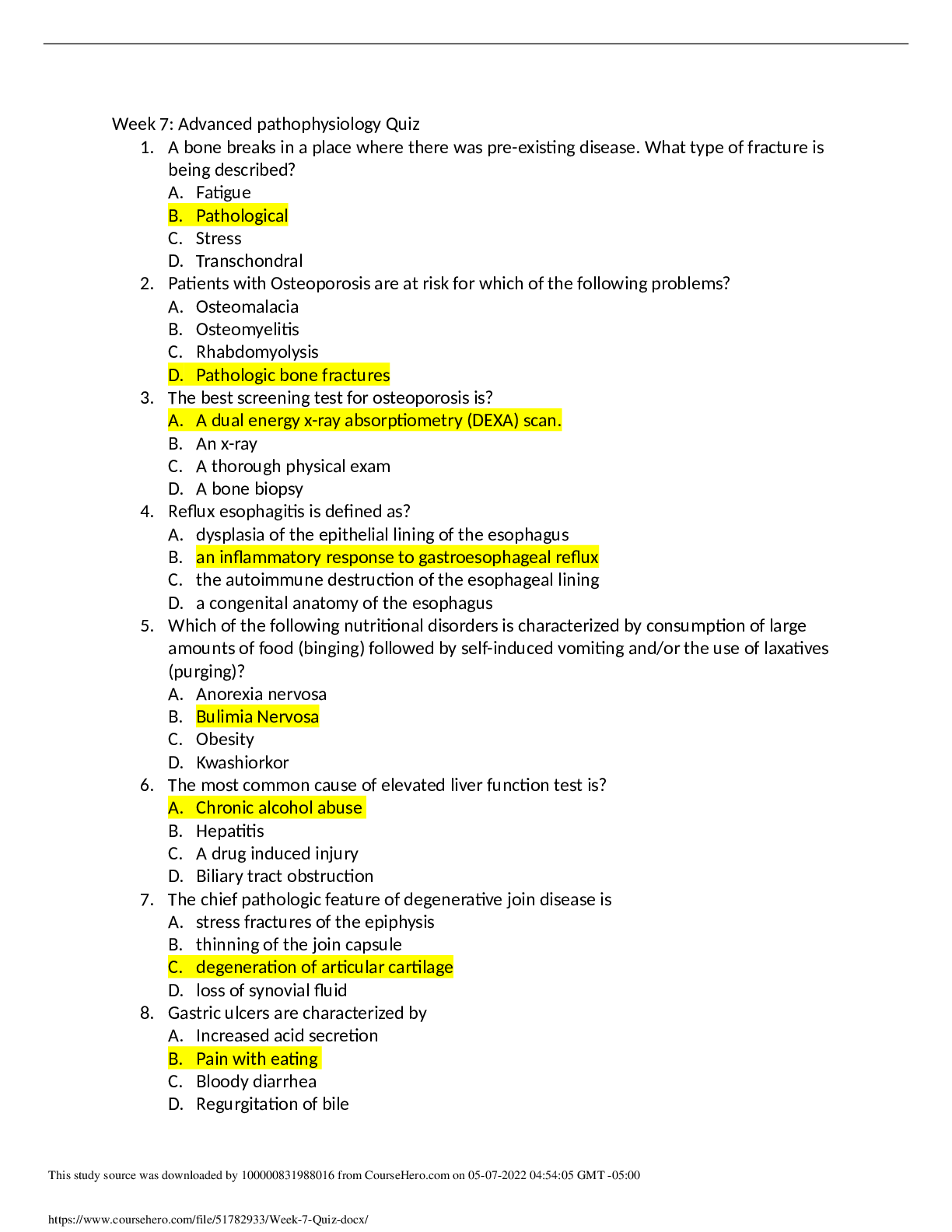
Reviews( 0 )
Document information
Connected school, study & course
About the document
Uploaded On
May 07, 2022
Number of pages
3
Written in
Additional information
This document has been written for:
Uploaded
May 07, 2022
Downloads
0
Views
82

.png)
.png)
.png)
.png)
.png)
.png)
.png)
.png)
.png)
.png)
.png)

.png)
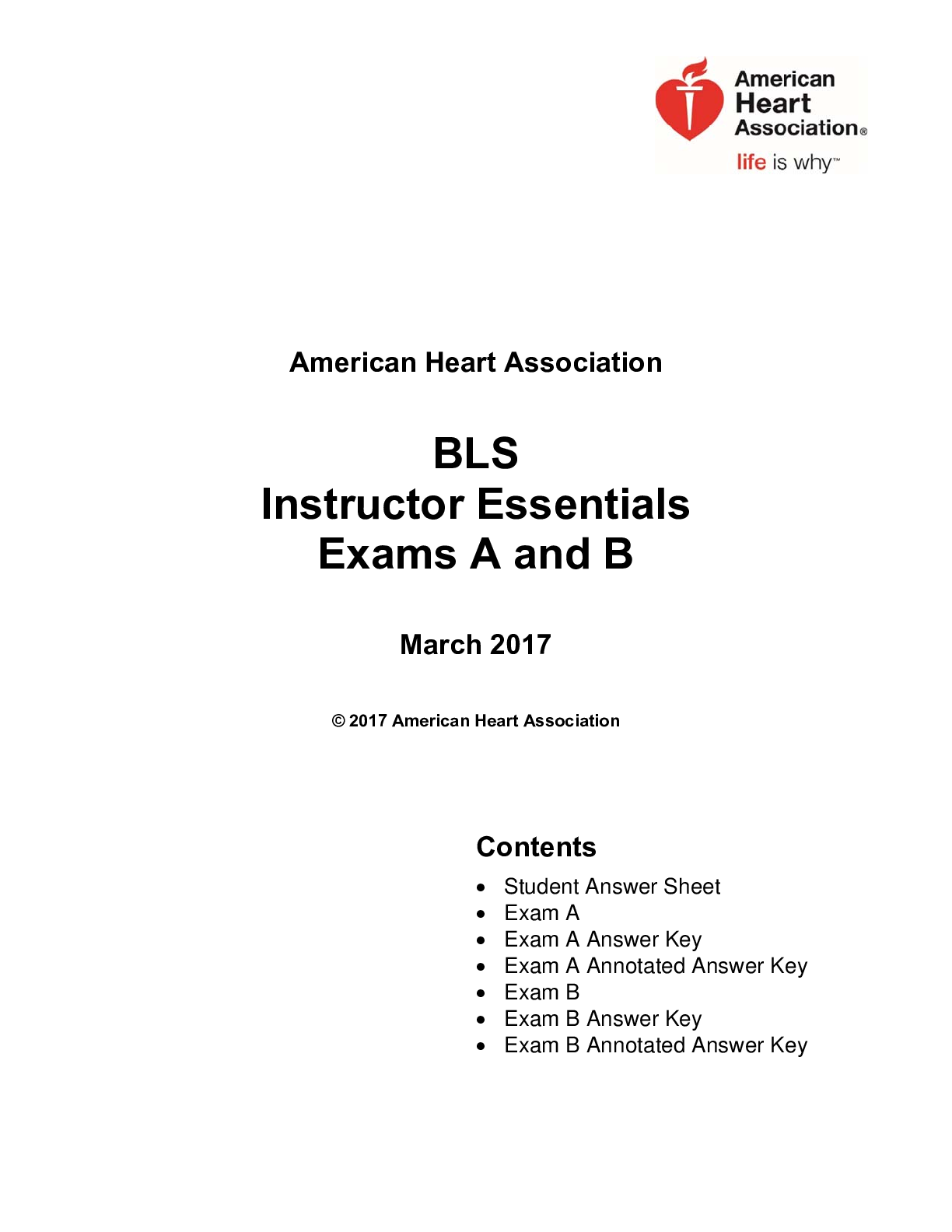
.png)
.png)

 (1).png)
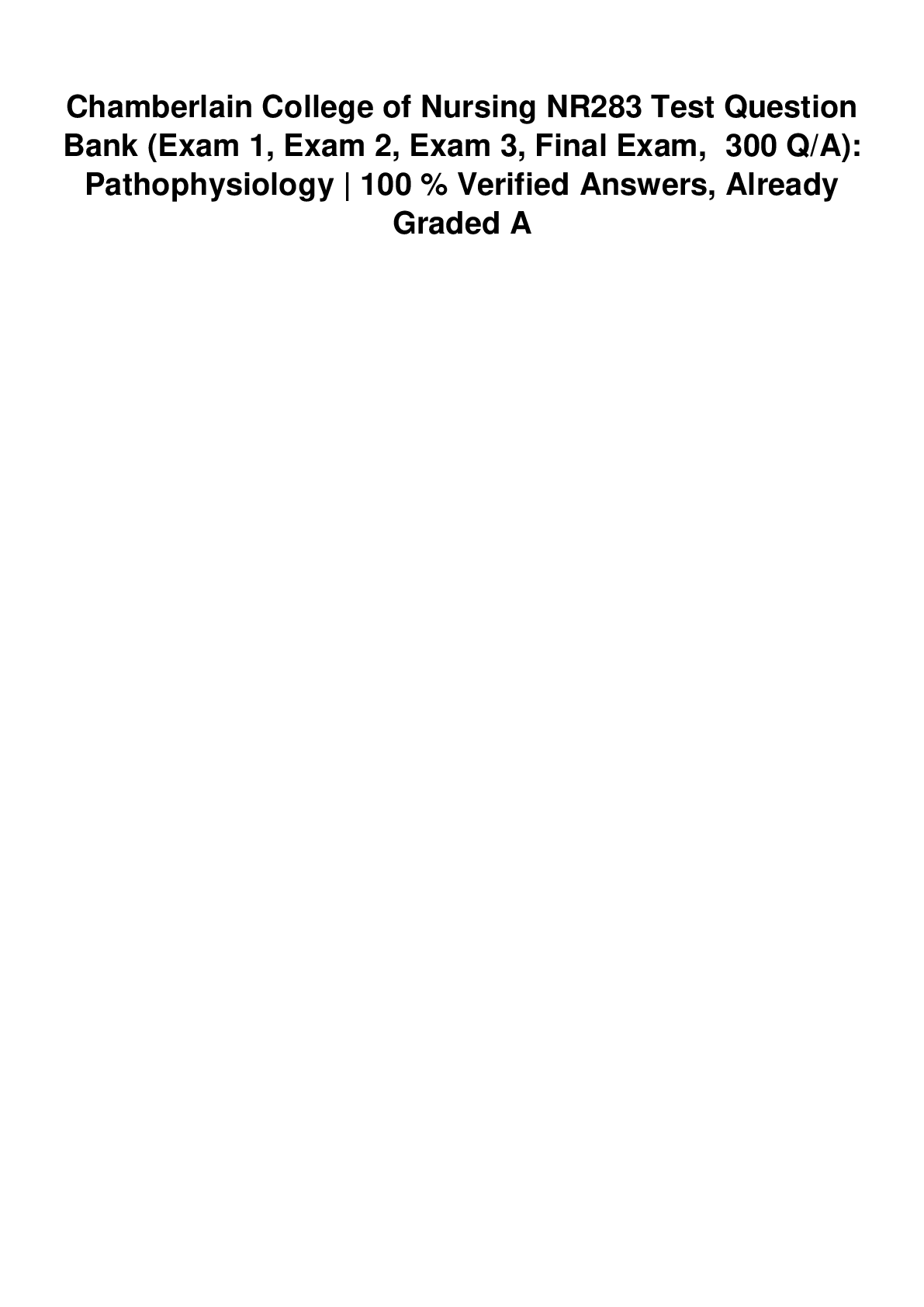
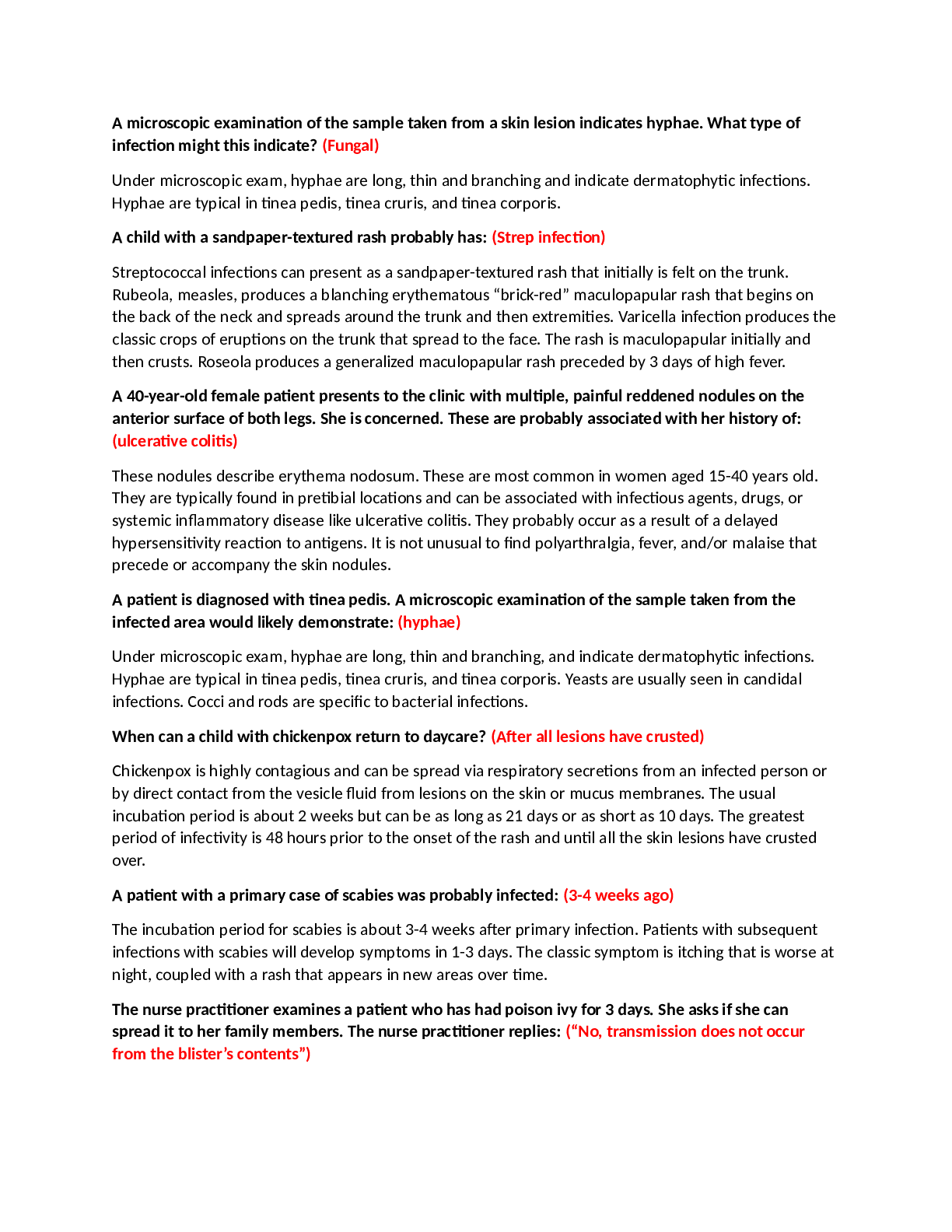
.png)
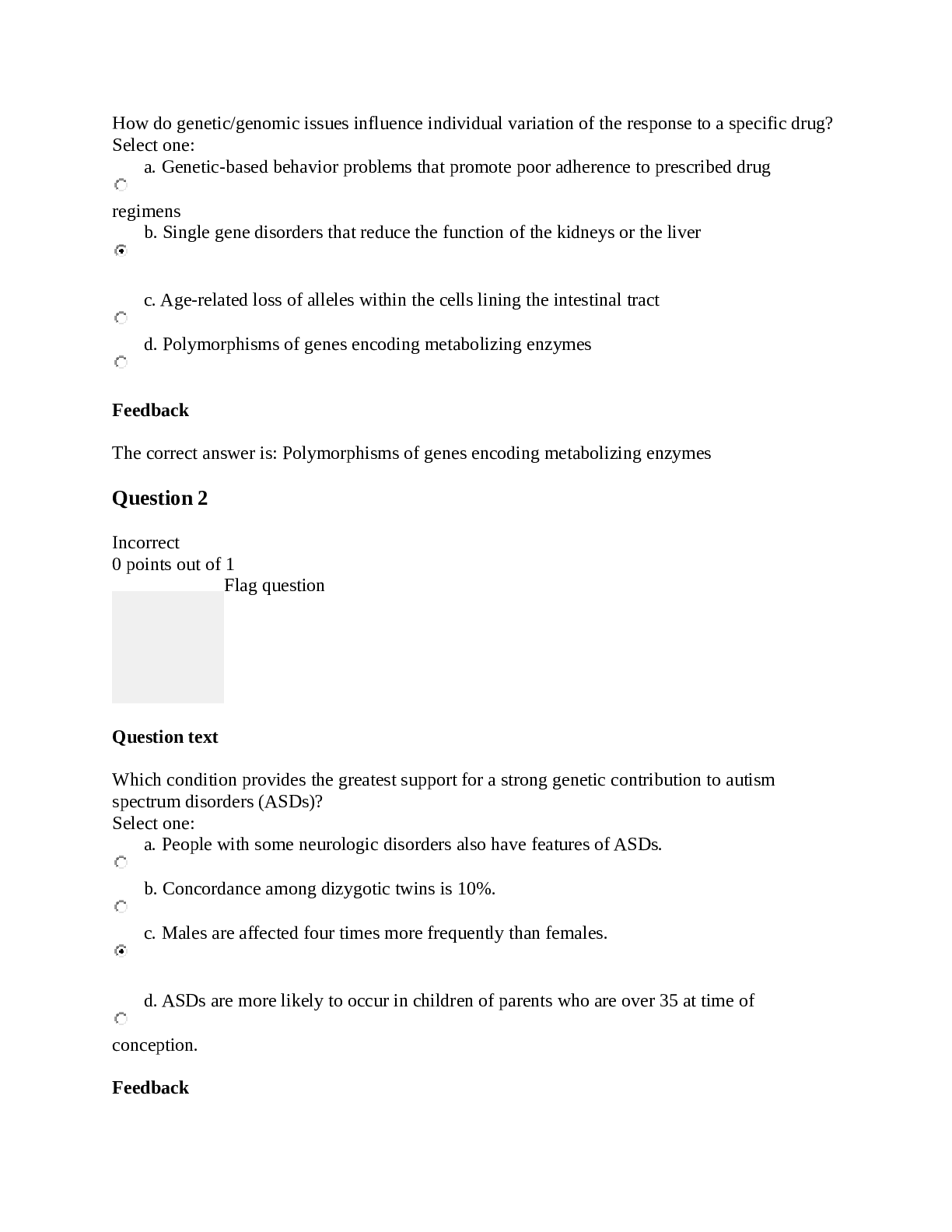
.png)
.png)
.png)
.png)
.png)
.png)
.png)
.png)

